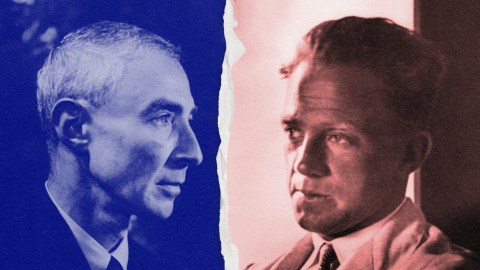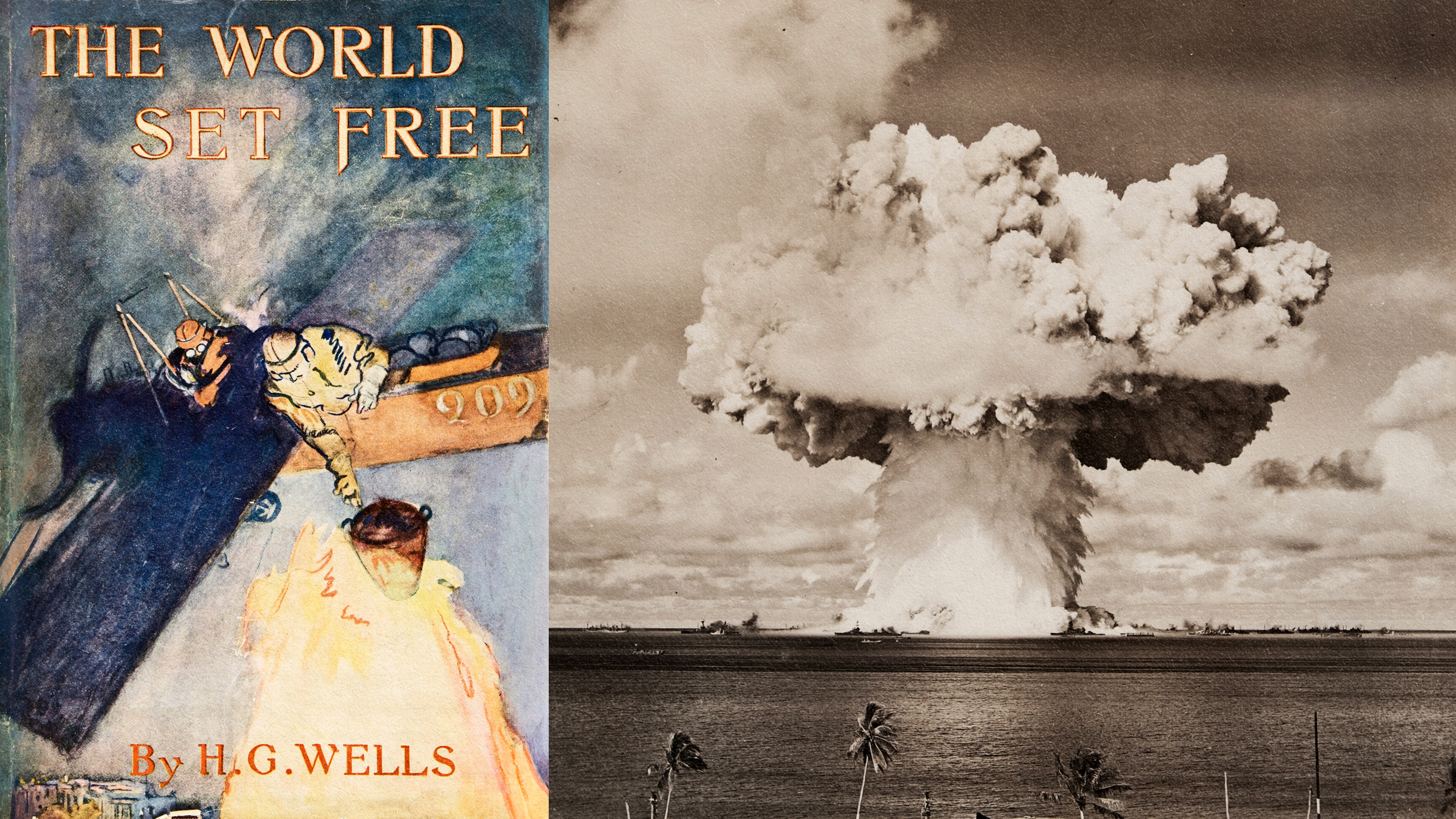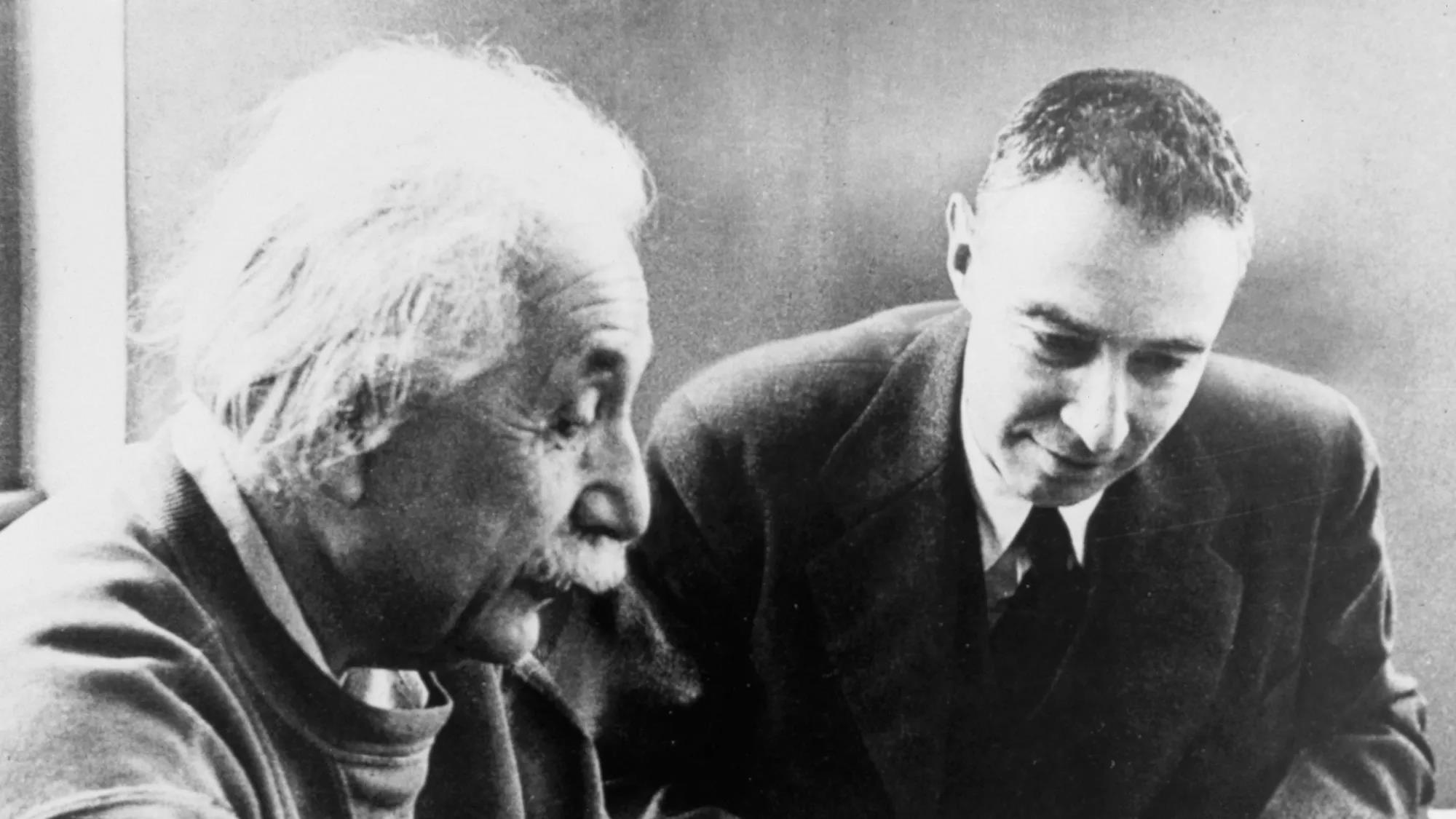Why quantum genius Werner Heisenberg was nowhere near beating Oppenheimer to the bomb

- Toward the end of World War Two, teams of Allied soldiers and scientists — aka the Alsos Mission — were tasked with gathering intelligence on the Nazi atomic program.
- Danish physicist Niels Bohr, among other sources, revealed that quantum mechanics pioneer Werner Heisenberg was leading Germany's nuclear research.
- Heisenberg, fresh from a 200-mile bicycle ride, was finally tracked down high in the Bavarian Alps, a long way shy of his atomic goals.
In the summer of 1944, the Manhattan Project, led by the physicist J. Robert Oppenheimer and Brigadier General Leslie Groves, was working relentlessly to build an atomic bomb. Their urgency was from the fear that the Nazis were building their own bomb. The Allied landings in Europe gave them the opportunity to find out for certain. Groves sent teams of soldiers and scientists, collectively known as the Alsos Mission, to follow the advancing Allied troops and gather intelligence on the Nazi atomic program. In France they found clues about German installations, scientists and equipment. Near Antwerp in Belgium, they seized some of the uranium ore that had been mined in Belgian Congo. Further missions located more ore in southern France. These were shipped to the United States.
However, the majority of the ore was still somewhere in Germany, as were most of the scientists of interest. When the French 2nd Armored Division liberated Strasbourg in November 1944, it gave the Alsos Mission its first big intelligence break, for documents found in Rennes and Eindhoven had pointed to the Alsatian capital as a center of atomic research. Alsos commander Lieutenant Colonel Boris T. Pash (who had been one of Groves’ intelligence chiefs on the Manhattan Project) managed to round up several German physicists there who were disguised as medics. Dutch-born physicist Samuel Goudsmit, who led the scientific portions of the mission, followed him there, after receiving Pash’s urgent telegram.
Interrogations yielded nothing, but a close examination of their papers—read by candlelight while artillery shells were still falling on the city—revealed to Goudsmit’s relief that the Germans were nowhere near capable of making an atomic bomb, because they did not realize how to refine fissile U-235. Further study then confirmed what British physicist Reginald Jones had already told Goudsmit—that the most prominent nuclear physicist in Germany, Werner Heisenberg, had moved his laboratories from Berlin to the town of Hechingen in Baden-Württemberg, just seventy miles from Strasbourg. The Allies had learned through several sources, including Heisenberg’s own friend the Danish physicist Niels Bohr, that Heisenberg was leading the Nazi atomic program. As soon as the first Bailey Bridges were thrown over the Rhine River in March 1945, Alsos would cross them into the heart of Nazi Germany to locate him.
Heisenberg was not the only target of interest. One Alsos team learned that the Germans had built a uranium processing plant at Oranienburg, near Berlin. Groves requested of General Carl Spaatz that his Eighth Army Air Force destroy the facility, which they did on March 15 with high explosives and incendiaries. At the same time, another team arrived at the university town of Heidelberg, where Goudsmit knew his old friend Walther Bothe had his physics laboratory. Any unease that he had about detaining a colleague was put to rest when Bothe embraced him warmly and said, as Goudmit recalled, “I am glad to have someone here to talk physics with.” While Bothe did not reveal any atomic secrets—he claimed to be a loyal German if not a Nazi, according to Goudsmit—he did reveal that the entire program consisted of only two dozen scientists plus helpers.
During April 1945, Alsos teams pushed deeper into Germany, in an attempt to reach key sites before the country was divided into Soviet, British, American, and French zones, as had been decided by the national leaders at the Yalta conference back in February. Goudsmit’s group captured Otto Hahn (who led the original discovery of fission) and several more scientists, and later learned that the destruction of the heavy-water plant at Vemork Norsk in Norway had prevented the German atomic program from advancing. Meanwhile, one of Pash’s teams found the remaining uranium ore stockpile in central Germany, and the ore was trucked out over the next two weeks.
Pash next joined with the Sixth Army to converge on the town of Haigerloch, where on April 23 they found an experimental uranium pile (a primitive nuclear reactor using heavy water to slow the neutrons, which the Nazis believed could become a bomb) in a cave below a castle, with uranium ore and heavy water buried nearby. These were dug up and the pile was dismantled, and all were shipped to the United States.
As the Allies and Soviets were encircling Berlin, Alsos’s biggest prize, Werner Heisenberg, continued to elude them. They found his atomic laboratory set up in a corner of an old textile mill in Hechingen, just ten miles from Haigerloch, but Heisenberg himself had left just a few days before they arrived, bicycling almost 200 miles to his winter cabin in Urfeld, high in the Bavarian Alps. Pash immediately set out in pursuit, and his jeep arrived at the base of the mountain, which was still covered with snow, on May 3. The bridge to Urfeld had been blown up and there were SS troops reported in the area, though Hitler was already dead and what was left of the Nazi government was on the verge of surrender.
When safely in Allied hands, Heisenberg proudly told his old friend Goudsmit all about his research, which he claimed was for producing energy and not a weapon.
Pash’s force of nineteen men clambered up the slopes, arriving at a large hotel, where the innkeeper pointed him to the cabin. Heisenberg was waiting on the veranda. “I have been expecting you,” he apparently told Pash. Pash took a deep breath and told him that he and his family would have to be evacuated immediately to Heidelberg. The urgency of the moment was intensified when a small SS contingent came close to the cabin, only to be dispersed with small-arms fire from Pash’s troops.
When safely in Allied hands, Heisenberg proudly told his old friend Goudsmit all about his research, which he claimed was for producing energy and not a weapon. As earlier with Bothe, Heisenberg claimed to Goudsmit that he was a nationalist but not a Nazi. He was convinced that his little reactor was the last word in atomic physics, and insisted on staying in Germany to continue his work. Goudsmit came away more depressed than relieved. Heisenberg, in his view, “was the greatest German theoretical physicist,” on par with Einstein, but his achievements fell far short of his vision. Goudsmit concluded that “the whole German uranium setup was on a ludicrously small scale. Here was the central group of laboratories, and all it amounted to was a little underground cave and a wing of a small textile factory.” He speculated that the US government had “spent more money on our intelligence mission than the Germans had spent on their whole project.”
Goudsmit may have been right that the Alsos Mission outspent Heisenberg’s program, but he likely would have been astonished to learn that the cost of the Manhattan Project alone (modern estimates put it at about $2 billion in 1945, worth half a trillion dollars today) was equal to half the entire German annual economy during the war. That one project, though, would prove to be worth the expense.





